Have you ever noticed that the movie sets, furniture, doors, floors, floors, everyday wooden objects, mirror frames in the houses where the action takes place don't look new? Depending on the context, some even look very old and dilapidated, as if they've been used generation after generation. It's an illusion created by artificial ageing techniques, the old look contributing to the overall atmosphere and even to the success of the movie. Using similar techniques, old-looking objects such as various pieces of furniture or parquet flooring are produced in factories. By combining simple ageing techniques, we can also achieve the same effect at home, making new furniture look used, with the patina of time and a unique look. The process is also called antiquinga term that you won't find in the DEX, but with which specialists in the furniture industry and in general those who use such techniques on wood, wrought iron, copper or precious metals have become accustomed.
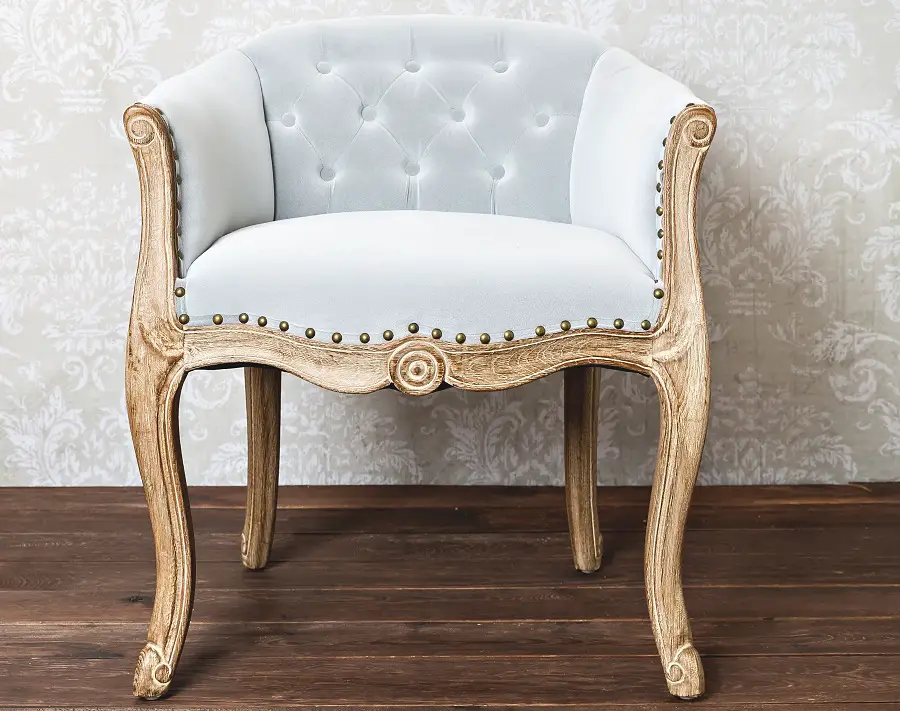
There are various ageing techniques, some of which can be applied to existing furniture, and others starting with wood that has not yet been covered with finishing materials. It is very important that the effect should be as natural as possible, without exaggerations or effects not normally found on old work. In the following, we will talk about such weathering methods that can be used even by a non-professional. In the article you will also find a video in which three of the methods are presented in detail.
What features of an old piece of furniture or object should be highlighted
First we should see what is specific to an old object and what makes it different from a new one.
- First and foremost is the general appearance of age given by the slight darkening or yellowing of the color due to sunlight or direct light, dust and dirt deposited over time. It is what we usually call patina of the weather and appears even on maintained objects. This patina settles everywhere, but even more so in hard-to-reach areas, corners, profiled areas or carvings.
- Then there are the little accidents that objects suffer over time: bumps, scratches, rubs in certain areas or on the edges, paint chipped off. Over time, dark dirt collects in dents and scratches and they become more visible. Sometimes, because the paint is skipped in several places, the object is repainted without removing the old layer. Over time, the edges deteriorate again and in some places you start to see the wood, in others just the old layer of paint. Sometimes the top coat cracks because it was not compatible with the old one, the top coat is too thick or the adhesion is poor. If furniture is knocked in areas with poor adhesion, the paint cracks and some of it comes off.
- Quarry holes are also associated with age. It is thought that the object is so old that the decay has had time to develop and grow out, leaving behind small, specific holes, several of them in one place.
For an object to look really old, all these aspects must be reproduced as faithfully as possible. We want Ageing the object, not getting interesting effects on wood.
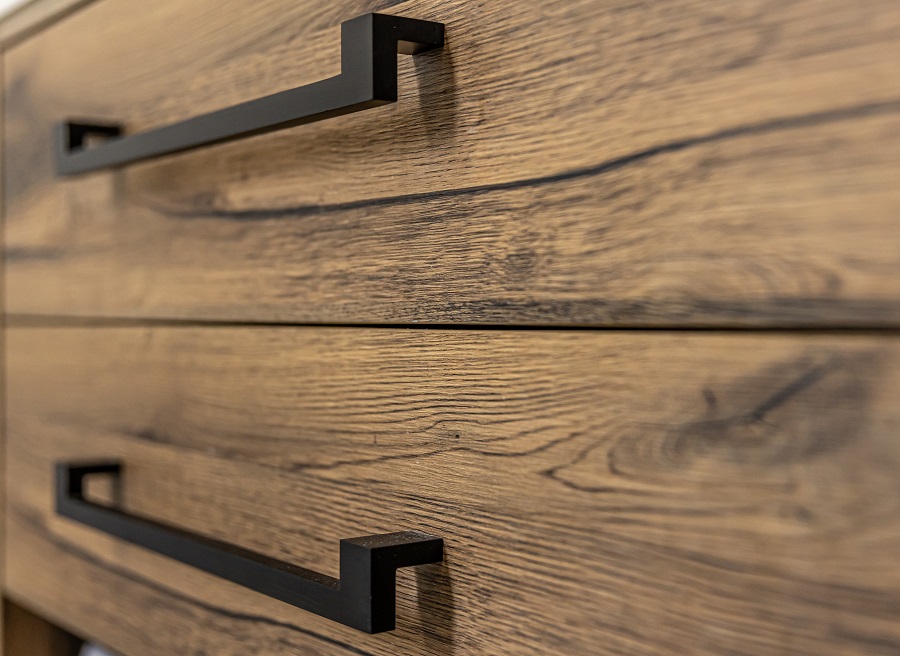
For some effects, it is necessary to start with wood staining
It starts with the reproduction of small accident during use. The wood will acquire specific marks that will be emphasized by subsequent coats of finish. Objects are used that leave various marks (nut bags or stones of different sizes), the wood is scratched, the edges are rubbed with a pick or scraper. To suggest a wood ate weather is brushed with wire or plastic brushes, i.e. it is structured. The effect can also be reproduced by superficial burning followed by brushing, giving the wood a slight patina. Structuring can also be done by sandblasting, and factories use structuring machines, a kind of sanding machine with special brushes. Quarry holes are reproduced with nails. All these techniques are described in detail here.
The marks left on the wood will be highlighted when staining. The stain will be absorbed more in the affected areas and there the color will be darker, especially if a classic color is used (walnut, dark oak, chestnut). The technique is used for transparent finishes done with oil, wax or varnish. Patinas (which I'll come back to below) or colored waxes (especially dark brown) also accentuate the effect because they accumulate in the marks in the wood.
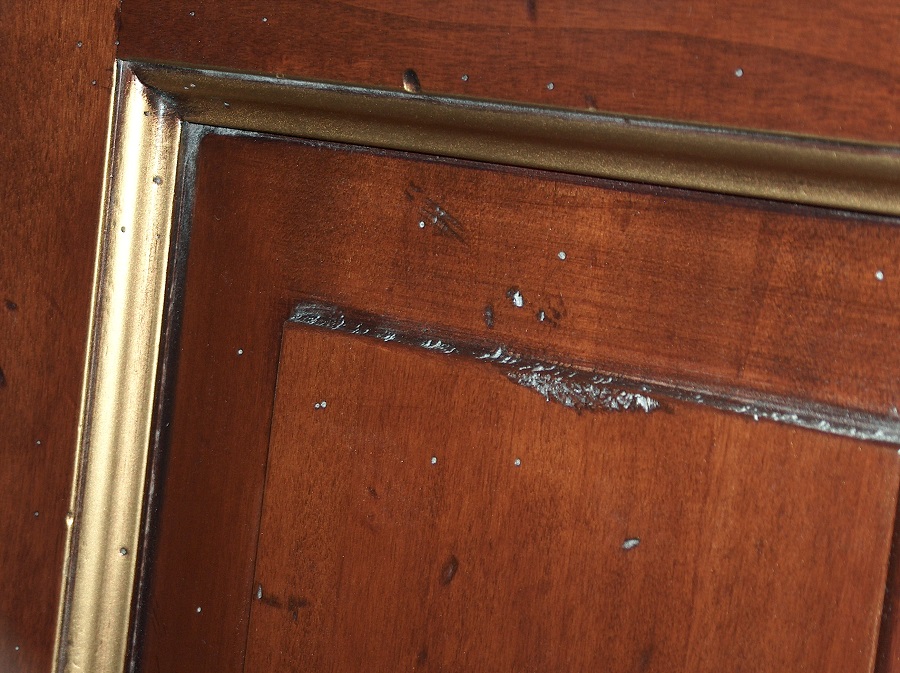
Distressed - a method of artificial weathering with successive layers of paint and chipped edges
It is the edges, corners and profiled areas of furniture that are most affected by the passage of time. These become faded and the under layers and even the wood begin to show through. Distressed is a distressing technique that replicates this aged look. The effect is more noticeable on painted furniture and especially when the lower layer of color contrasts with the top.
If you are starting with clean wood and you want only the wood to show on the edges, first apply a coat of clear primer and then a coat of paint. This will make the coat thinner, sand smooth and get to the wood faster. Abrasive sponges work best when sanding because they mold to the edges and corners. The movements follow the edge, as shown in the video below, and the paint is removed gradually so that the effect is as natural as possible. Finally, apply a coat of wax or a low-gloss or natural effect varnish. They will protect the effect without making the furniture look new. For a stronger contrast, the wood is stained before the primer. Bait can be applied only to the areas to be sanded, thus reducing consumption.
The method can also be used to transform a piece of furniture. Before applying the new coat of paint, the furniture is degreased by washing with water and dishwashing detergent. Wipe it dry, allow it to soak and then apply the paint. Check compatibility with the old coat on a more hidden area. After drying, sand as above, on some areas insisting down to the wood, on others just reaching the old coat of paint. The old look is emphasized if the sanding is extended to other parts of the surface, but everything must look authentic and natural. Also, applying patinas or colored waxes will darken the furniture and accentuate the antique look.
In the video at the end the distressed method is described step by step.
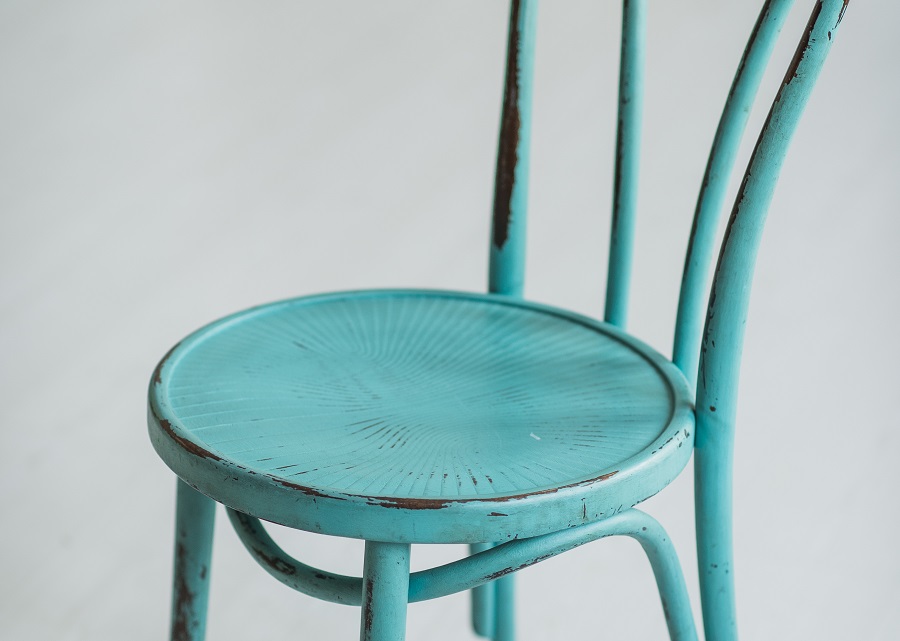
Color wash and color overlay
An interesting effect is achieved by layering several colors. They can be very close in hue or different. These are quite laborious techniques, and the result is down to the artist's sense of aesthetics. The paints can be sanded after drying so that all the layers are visible, or they can be erased.
Color wash is the wiping method. Use slower drying water-based or cream paints. Successive coats of closely matching colors are applied with a brush and wiped off so that shadows appear to be visible. Each coat is applied, lightly splashed with water and then wiped along the grain. After wiping, the next coat is applied and wiped in the same way. This will result in a look of interwoven colors, matching the style shabby chic. Even if the final look doesn't betray the many coats, to achieve the most believable effect, you need to apply many layers of paint.
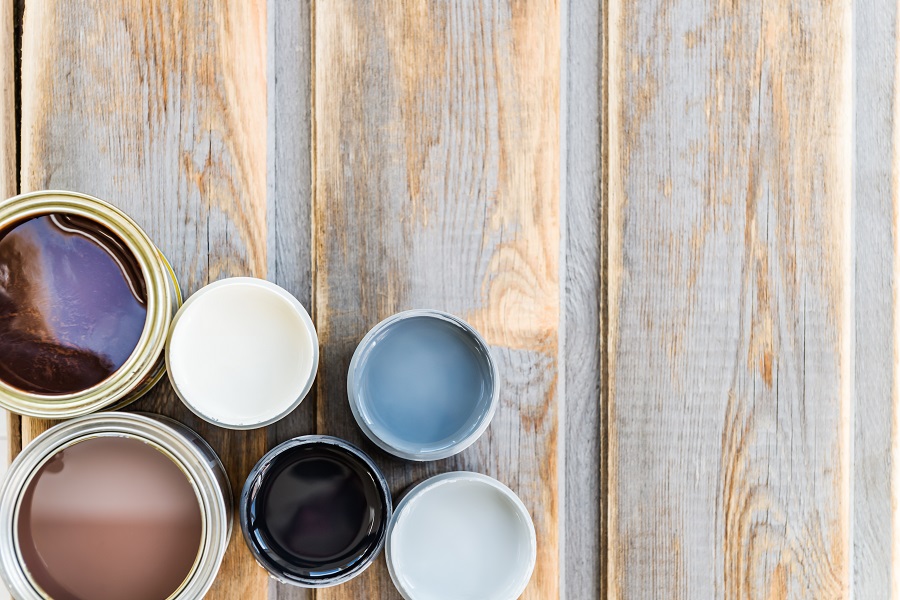
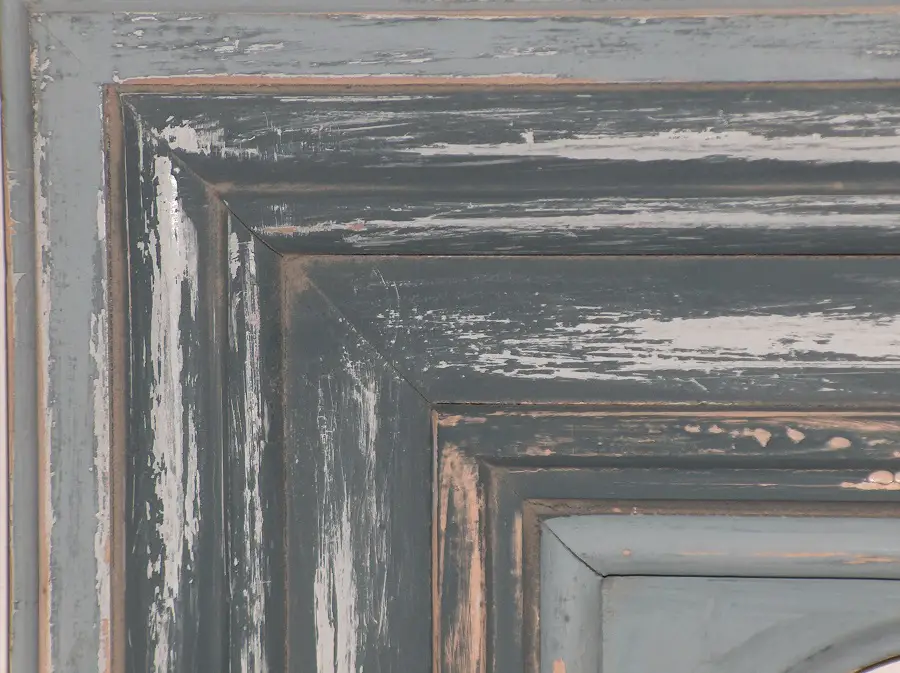
Whitewash is a special ageing method that gives furniture a washed white, whitewashed look. The effect can vary in intensity and looks great on wood with large pores. There are several techniques to achieve it, which are described at length here.
Ageing skates
Patination is the most commonly used way to simulate color change due to the passage of time and the accumulation of dirt in corners, profiles and dents. Patinas are of several types and have different colors and application methods. They are water- or solvent-based, with wiping or sanding after drying.
To suggest color fading over time, the patina is applied evenly over the entire surface. After wiping or sanding, the surface of the furniture will be darker in color and dusty, slightly dirty. If the furniture has profiled areas, has been knocked or scratched, more patina will remain and the furniture will look aged. Wood with pores is also highlighted by this process because the patina remains in the pores.
The skids are protected at the end with a thin coat of wax or varnish. For furniture to have a credible distressed look, the varnish should not be glossy. An old piece of furniture loses its shine over time, and accumulated dirt cakes the surface.
See how to apply and remove ageing patches in the video.

Special techniques
The old look is also achieved with the author of special materials or techniques. To reproduce the gray color of wood that has sat outside unprotected a solution obtained by soaking a steel wool, a metal kitchen sponge or metal wool in vinegar for a few days. The solution is very effective on tanned wood and the effect is enhanced by the sun. Details on this method here.
The skipped paint effect can be reproduced by waxing from place to place on the surface to be painted. After drying, rub the surface vigorously with a cloth. The paint peels off easily in the waxed areas, looking as if long time has taken its toll. If an ageing patina is also used, the effect is guaranteed.
Cracked paint is achieved by using a special material. It relies on the incompatibility between the materials and causes the paint to slip and crack after drying when this material has been applied underneath. The result is very effective and very believable.
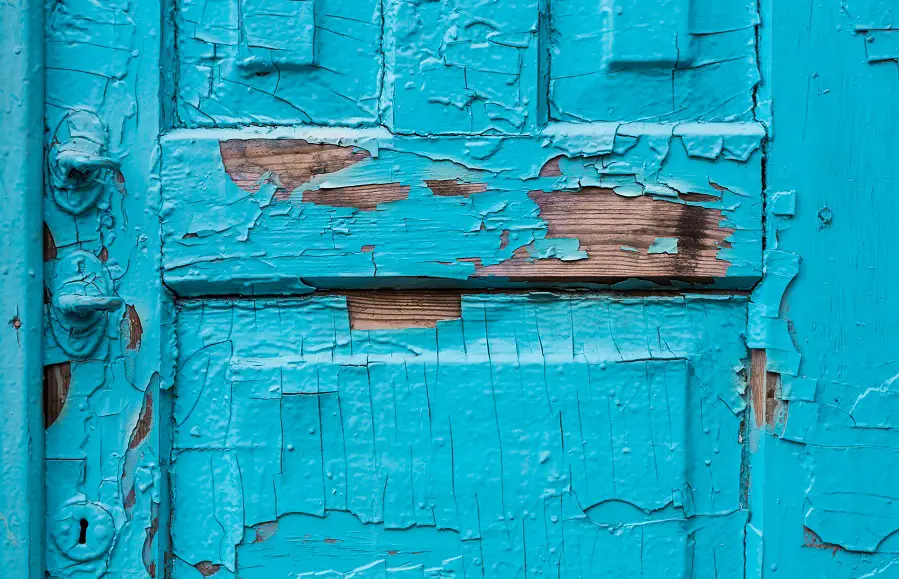
The artificial ageing of wooden objects rarely results from the application of a single process. The most credible transformations occur through a combination of several techniques and long practice. It is very important that the look is believable, and for that you need to carefully study what happens to objects over time, which areas are most exposed to knocks and scratches, or how the color darkens with exposure to light. Practice and inspiration are often more important than detailed knowledge of classical techniques.
That's all for now. But I am sure I will come back to the subject as it is of interest to many of you, and new methods and materials are constantly being tested. I'd love to hear from you about the original methods and aging techniques you use. And for those of you who have any questions or queries, you can leave them below in the dedicated space. I will certainly reply.




































Add comment